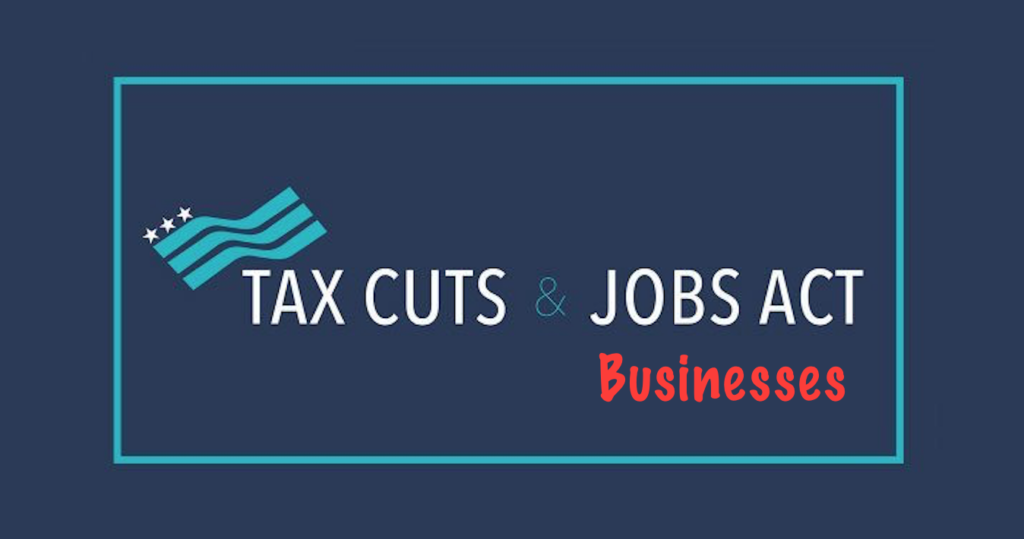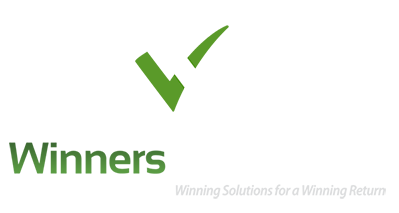
Tax Cuts and Jobs Act (TCJA) for Businesses :
Overall, most companies and their owners will come out ahead under the TCJA, but there are a number of tax breaks that have been reduced or eliminated to make room for tax cuts and other beneficial revi- sions. Here are some important changes in the new law that will affect businesses and their owners.
Changes for corporations
The TCJA will substantially impact corporations, mostly to their benefit:
New 21% corporate tax rate. Under pre-TCJA law, C corporations pay federal income tax at graduated rates of 15% on taxable income of $0 to $50,000; 25% on taxable income of $50,001 to $75,000; 34% on taxable income of $75,001 to $10 million; and 35% on taxable income over $10 million. Personal service corporations (PSCs) pay a flat 35% rate. For tax years beginning in 2018 or later, the TCJA establishes a flat 21% corporate rate, and that rate also applies to PSCs.
Corporate AMT repealed. Prior to the TCJA, the corporate AMT was imposed at a 20% rate. However, corporations with average annual gross receipts of less than $7.5 million for the preced- ing three tax years were exempt. For tax years beginning in 2018 or later, the new law repeals the corporate AMT. For corporations that paid the corporate AMT in earlier years, an AMT credit was allowed under prior law. The new law allows corporations to fully use their AMT credit carryovers in their 2018–2021 tax years.
Reduced corporate dividends deduction. Under pre-TCJA law, C corporations that received dividends from other corporations are entitled to partially deduct those dividends. If the corporation owns at least 20% of the stock of another corporation, an 80% deduction applies. Otherwise, the deduction is 70% of dividends received. For tax years beginning in 2018 or later, the TCJA reduces the 80% deduction to 65% and the 70% deduction to 50%.
New deduction for pass-through businesses
Under pre-TCJA law, net taxable income from pass-through business entities (such as sole propri- etorships, partnerships, S corporations and LLCs that are treated as sole proprietorships or as part- nerships for tax purposes) was simply passed through to owners. It was then taxed at the owners’ standard rates. In other words, no special treatment applied to pass-through income recognized by business owners.
For tax years beginning in 2018 through 2025, the TCJA establishes a new deduction based on a noncorporate owner’s qualified business income (QBI). This break is available to individuals, estates and trusts that own interests in pass-through business entities. The deduction generally equals 20% of QBI, subject to restrictions that can apply at higher income levels.
QBI is generally defined as the net amount of qualified items of income, gain, deduction and loss from any qualified business of the noncorporate owner. For this purpose, qualified items are income, gain, deduction and loss that are effectively connected with the conduct of a U.S. business. QBI doesn’t include certain investment items, reasonable compensation paid to an owner for services rendered to the business or any guaranteed payments to a partner or LLC member treated as a partner for services rendered to the partnership or LLC.
The QBI deduction isn’t allowed in calculating the owner’s AGI, but it reduces taxable income. In effect, it’s treated the same as an allowable itemized deduction.
W-2 wage limitation. For pass-through entities other than sole proprietorships, the QBI deduction generally can’t exceed the greater of the owner’s share of:
- 50% of the amount of W-2 wages paid to employees by the qualified business during the tax year, or
- The sum of 25% of W-2 wages plus 2.5% of the cost of qualified property.
Qualified property is the depreciable tangible property (including real estate) owned by a qualified business as of year end and used by the business at any point during the tax year for the production of qualified business income.
Under an exception, the W-2 wage limitation doesn’t apply until an individual owner’s taxable income exceeds $157,500 ($315,000 for joint filers). Above those income levels, the W-2 wage limitation is phased in over a $50,000 range ($100,000 range for joint filers).
Service business limitation. The QBI deduction generally isn’t available for income from specified service businesses (such as most professional practices other than engineering and architecture and businesses that involve investment-type services such as brokerage and investment advisory ser- vices). Under an exception, the service business limitation doesn’t apply until an individual owner’s taxable income exceeds $157,500 ($315,000 for joint filers). Above those income levels, the service business limitation is phased in over a $50,000 phase-in range ($100,000 range for joint filers).
Business interest deductions
Subject to some restrictions and exceptions, under pre-TCJA law interest paid or accrued by a business generally is fully deductible. Under the TCJA, for tax years that begin in 2018 or later, businesses generally can’t deduct interest expenses in excess of 30% of “adjusted taxable income.” For S corporations, partnerships and LLCs that are treated as partnerships for tax purposes, this limit is applied at the entity level rather than at the owner level.
For tax years beginning in 2018 through 2021, adjusted taxable income is calculated by adding back allowable deductions for depreciation, amortization and depletion. After that, these amounts aren’t added back in calculating adjusted taxable income.
Business interest expense that’s disallowed under this limitation is treated as business interest aris- ing in the following taxable year. Amounts that cannot be deducted in the current year can generally be carried forward indefinitely.
Taxpayers (other than tax shelters) with average annual gross receipts of $25 million or less for the three previous tax years are exempt from the interest deduction limitation. Some other taxpayers are also exempt.
For example, real property businesses can elect to continue to fully deduct their interest, but then would be required to use the alternative depreciation system for real property used in the business. Interest expense from dealer floor-plan financing (for example, financing by dealers to acquire motor vehicles, boats or farm machinery that will be sold or leased to customers) is also still fully deductible.
Bonus depreciation
Under pre-TCJA law, for qualified new assets that your business placed in service in 2017, you can claim a 50% first-year bonus depreciation deduction. Used assets don’t qualify. This tax break is available for the cost of new computer systems, purchased software, vehicles, machinery, equip- ment, office furniture and so forth. In addition, 50% bonus depreciation can be claimed for qualified improvement property.
Bonus depreciation improves significantly under the TCJA: For qualified property placed in service between September 28, 2017, and December 31, 2022 (or by December 31, 2023, for certain property with longer production periods), the first-year bonus depreciation percentage is increased to 100%. In addition, the 100% deduction is allowed for both new and used qualifying property. The new law also allows 100% bonus depreciation for qualified film, television and live theatrical produc- tions placed in service on or after September 28, 2017.
In later years, bonus depreciation is scheduled to be reduced as follows:
- 80% for property placed in service in 2023,
- 60% for property placed in service in 2024,
- 40% for property placed in service in 2025, and
- 20% for property placed in service in 2026.
For certain property with longer production periods, the preceding reductions are delayed by one year. For example, 80% bonus depreciation will apply to long-production-period property placed in service in 2024.
Also be aware that, under the TCJA, in some cases a business may not be eligible for bonus depre- ciation beginning in 2018. Examples include real estate businesses that elect to deduct 100% of their business interest and dealerships with floor-plan financing if they have average annual gross receipts of more than $25 million for the three previous tax years.
Section 179 deduction
When 100% first-year bonus depreciation isn’t available, the Sec. 179 tax break can provide similar benefits. Sec. 179 allows eligible taxpayers to deduct the entire cost of qualifying new or used depre- ciable property, most software and qualified real property improvement in Year 1, subject to various limitations.
Under pre-TCJA law, for tax years that began in 2017, the maximum Sec. 179 depreciation deduc- tion is $510,000. The maximum deduction is phased out dollar-for-dollar to the extent the cost of eli- gible property placed in service during the tax year exceeds the phaseout threshold of $2.03 million.
The TCJA permanently enhances the Sec. 179 deduction. Under the new law, for qualifying property placed in service in tax years beginning in 2018, the maximum Sec. 179 deduction is increased to $1 million, and the phaseout threshold amount is increased to $2.5 million. For later tax years, these amounts will be adjusted for inflation.
The new law also expands the definition of eligible property to include certain depreciable tangible per- sonal property used predominantly to furnish lodging. The definition of qualified real property eligible for the Sec. 179 deduction is also expanded to include the following improvements to nonresidential real property: roofs, HVAC equipment, fire protection and alarm systems, and security systems.
Deductions for business passenger vehicles
For new or used passenger vehicles that are placed in service in 2018 and used more than 50% for business, the maximum annual depreciation deductions under the TCJA are as follows:
- $10,000 for Year 1,
- $16,000 for Year 2,
- $9,600 for Year 3, and
- $5,760 for Year 4 and thereafter until the vehicle is fully depreciated.
For years after 2018, these amounts will be adjusted for inflation.
While the maximum amount that can be deducted in Year 1 under pre-TCJA law may be higher, the TCJA allows much faster depreciation overall. For example, under pre-TCJA law, the 2017 limit for a passenger car is $11,160 for Year 1 (if the car is new and the elected bonus is included; it’s $3,160 for a used car), and for subsequent years for new and used cars, the limits are $5,100 for Year 2, $3,050 for Year 3, and $1,875 for Year 4 and thereafter. Slightly higher limits apply to light trucks and light vans.
Meals, entertainment and transportation
Prior to the TCJA, taxpayers generally could deduct 50% of expenses for business-related meals and entertainment. Meals provided to an employee for the convenience of the employer on the employer’s business premises were 100% deductible by the employer and tax-free to the recipient employee. Various other employer-provided fringe benefits were also deductible by the employer and tax-free to the recipient employee.
Under the new law, for amounts paid or incurred after December 31, 2017, business-related enter- tainment expenses are no longer deductible. Meal expenses incurred while traveling on business are still 50% deductible, but the 50% disallowance rule will now also apply to meals provided via an on-premises cafeteria or otherwise on the employer’s premises for the convenience of the employer.
After 2025, the cost of meals provided through an on-premises cafeteria or otherwise on the employ- er’s premises will be nondeductible.
The new law also disallows employer deductions for the cost of providing commuting transportation to an employee (such as hiring a car service), unless the transportation is necessary for the employ- ee’s safety. It also eliminates employer deductions for the cost of providing qualified employee trans- portation fringe benefits (for example, parking allowances, mass transit passes and van pooling), but those benefits are still tax-free to recipient employees.
Other important changes
Here are some of the other business-related changes in the TCJA:
- The Section 199 deduction, also commonly referred to as the domestic production activities deduction or manufacturers’ deduction, is eliminated for tax years beginning after December 31, 2017, for noncorporate taxpayers and for tax years beginning after December 31, 2018, for C corporation taxpayers.
- For business net operating losses (NOLs) that arise in tax years ending after December 31, 2017, the maximum amount of taxable income that can be offset with NOL deductions is generally reduced from 100% to 80%. In addition, NOLs incurred in those years can no longer be carried back to an earlier tax year (except for certain farming losses). Affected NOLs can be carried forward indefinitely.
- A new limitation applies to deductions for “excess business losses” incurred by noncorporate taxpayers. Losses that are disallowed under this rule are carried forward to later tax years and can then be deducted under the rules that apply to NOLs. This new limit kicks in after applying the passive activity loss rules. However, it applies to an individual taxpayer only if the excess business loss exceeds the applicable threshold.
- The eligibility rules to use the more-flexible cash method of accounting are liberalized to make them available to many more medium-size businesses. Also, eligible businesses are excused from the chore of doing inventory accounting for tax purposes.
- The Section 1031 rules that allow tax-deferred exchanges of appreciated like-kind property is allowed only for real estate exchanges completed after December 31, 2017. Beginning in 2018, there are no more like-kind exchanges for personal property assets. However, the prior-law rules still apply if one leg of an exchange has been completed as of December 31, 2017, but one leg remains open on that date.
- Compensation deductions for amounts paid to principal executive officers generally cannot exceed $1 million per year, subject to a transition rule for amounts paid under binding contracts that were in effect as of November 2, 2017.
- Specified research and development (R&D) expenses must be capitalized and amortized over five years, or 15 years if the R&D is conducted outside the United States instead of being deducted currently. This goes into effect for tax years beginning after December 31, 2021.
The TCJA also includes a bevy of changes that will affect taxpayers who conduct foreign operations. In conjunction with the reduced corporate tax rate, the changes are intended to encourage multi- national companies to conduct more operations in the United States, with the resulting increased investments and job creation in this country.
- Need more information? Contact Your local Winners Tax Service Office Today!



